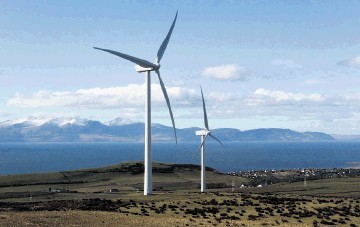
Scotland’s electricity system could be powered almost entirely by renewable energy by 2030, according to a report by an environmental charity.
WWF Scotland’s report uses independent analysis by an engineering and energy consultancy to test the Scottish Government’s policy to decarbonise the country’s electricity supply over the next 15 years.
It found that an electricity system based on “proven renewables and increased energy efficiency” is a credible way of meeting the target.
The report also warned that, with no guarantee that carbon capture and storage (CCS) will be commercialised and rolled out in time, Scotland’s climate targets could be missed unless a safer route to reducing carbon emissions is followed.
Scotland can maintain and even build on its position as a net power exporter if it makes moderate progress to reduce demand for electricity and increase the rollout of hydro-pumped storage, the report says.
Lead author of the report for consultancy DNV GL, Paul Gardner, said: “Our technical analysis shows that a system with an extremely high proportion of renewable electricity generation located in Scotland can be secure and stable. There is no technical reason requiring conventional fossil and nuclear generation in Scotland.
“Scotland has plenty of renewables in the pipeline to cut the carbon from its power supply by 2030, particularly if we see progress on reducing electricity demand. And crucially, Scotland can continue to be an electricity exporting nation.”
WWF Scotland’s climate and energy policy officer, Gina Hanrahan, said: “It’s great to see the vision for a secure, renewables-based future for Scotland independently tested and proven. It’s clear that Scotland doesn’t have to generate electricity from coal, gas or nuclear to ensure security of supply.
“We’d still like to see CCS tested at Peterhead, but given how slowly this technology is progressing, it makes sense to explore alternative paths to achieving the Government’s own target.
“The report shows that not only is a renewable, fossil-fuel free electricity system perfectly feasible in Scotland by 2030, it’s actually the safe bet.
“Pursuing this pathway would allow Scotland to maintain and build on its position as the UK and Europe’s renewable powerhouse, cut climate emissions and continue to reap the jobs and investment opportunities offered by Scotland’s abundant renewable resources.”
Recommended for you
